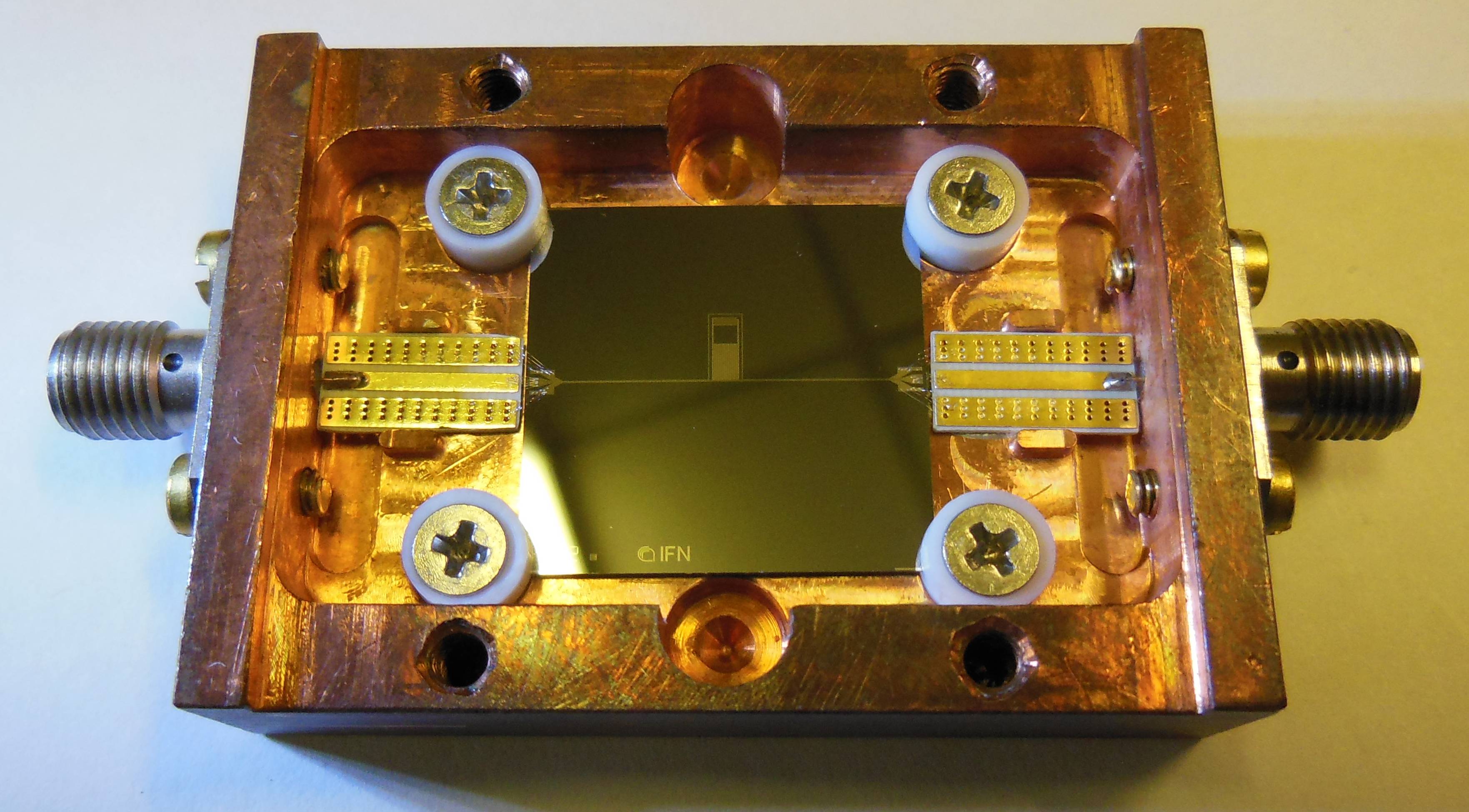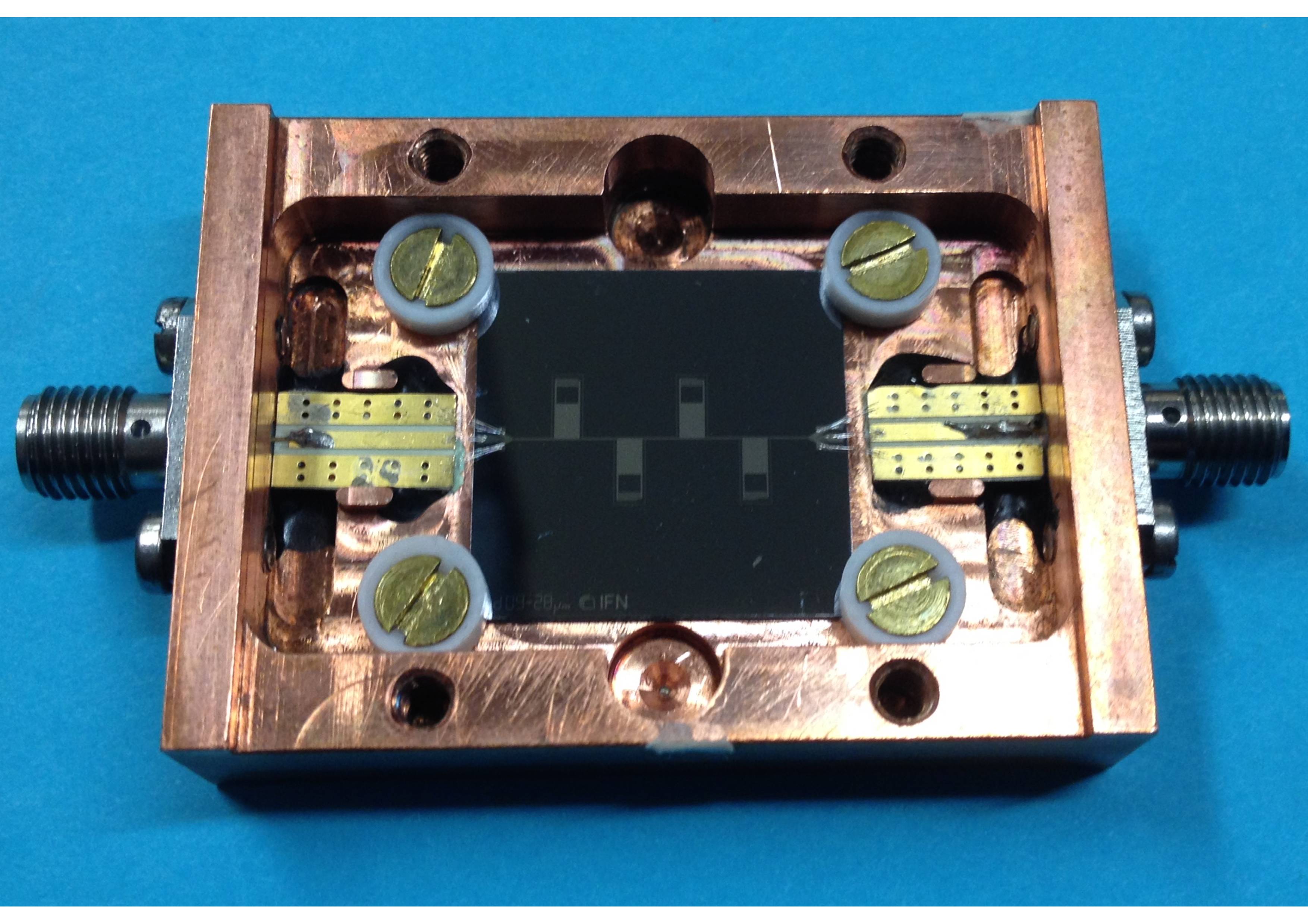The Experimental Challenge
Measuring tiny amounts of light at cryogenic temperatures is very complicated and sets stringent requirements on the features of the desired light detector:
- baseline resolution better than 20 eV;
- large active surface (5x5cm2) for an efficient coupling with commonly used cryogenic detectors;
- operation with high performance in a rather wide temperature range (5-15 mK) without need for fine-tuning;
- ease in fabrication and reproducibility;
- ease in operating hundreds of channels with low heat-load for the cryogenic system;
None of the current technologies for light detection fulfills all these requirements. The CALDER collaboration proposes to realize a new light detector by exploiting devices which have already been succesfully used in astrophysics: Kinetic Inductance Detectors (KIDs).
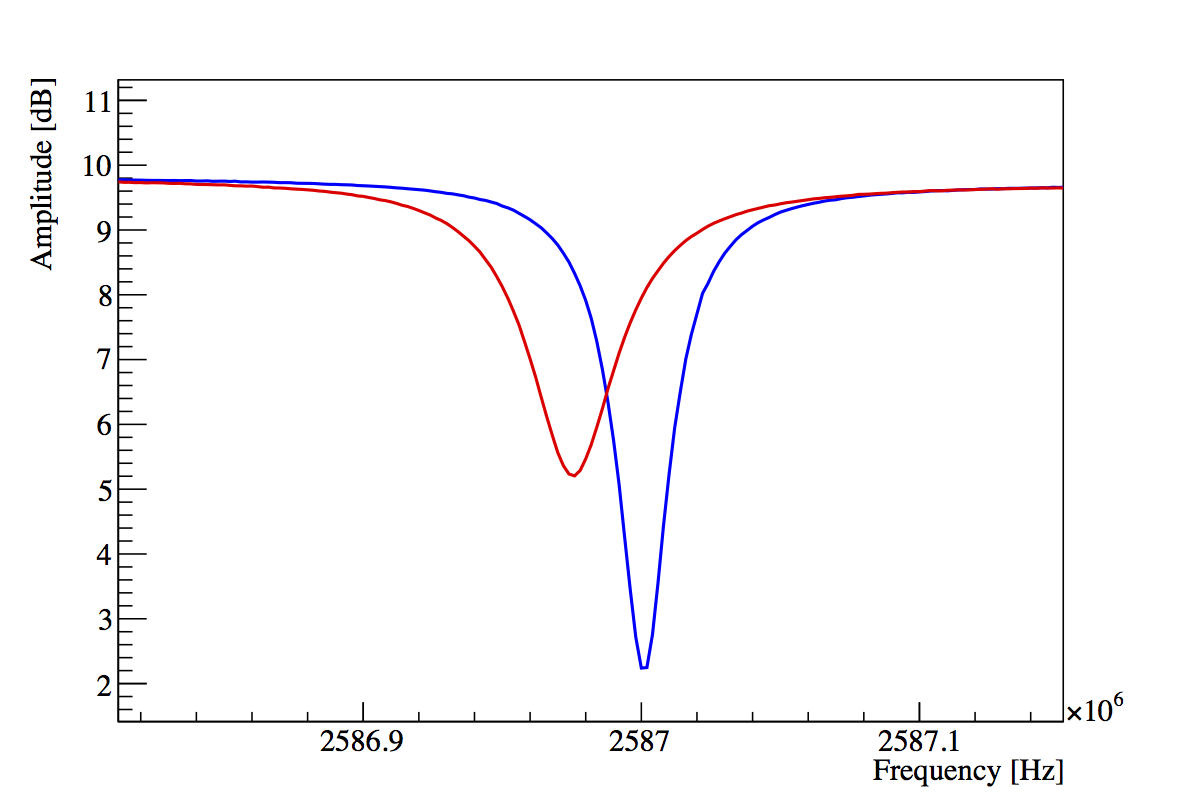 When a superconductor is biased with an AC current, Cooper pairs oscillate and acquire kinetic inductance LK.
The superconductor can be inserted in an LC circuit with high merit factor, that acts as a resonator (blue plot).
Interactions with energy larger than the binding energy of Cooper pairs (Δ0) can break them into quasiparticles, pruducing a variation of the kinetic inductance. The change in LK modifies the frequency and shape of the resonance (red plot). Thus, we can infer the energy of the interaction by monitoring the shape of the resonance.
The binding energy of Cooper pairs is much lower than 1 meV, thus even small energy deposits can produce a signal.
When a superconductor is biased with an AC current, Cooper pairs oscillate and acquire kinetic inductance LK.
The superconductor can be inserted in an LC circuit with high merit factor, that acts as a resonator (blue plot).
Interactions with energy larger than the binding energy of Cooper pairs (Δ0) can break them into quasiparticles, pruducing a variation of the kinetic inductance. The change in LK modifies the frequency and shape of the resonance (red plot). Thus, we can infer the energy of the interaction by monitoring the shape of the resonance.
The binding energy of Cooper pairs is much lower than 1 meV, thus even small energy deposits can produce a signal.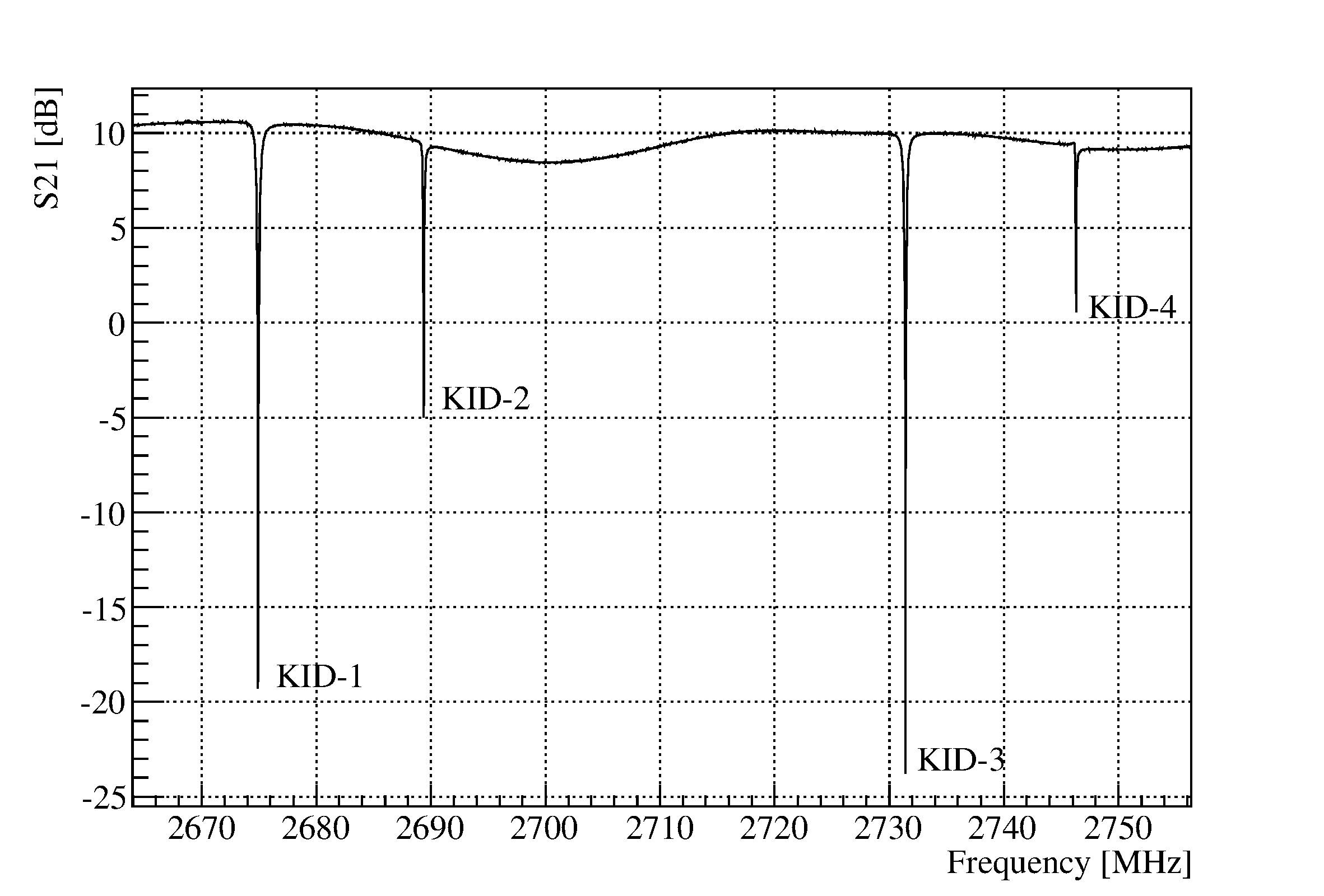
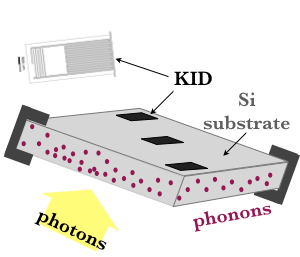 Nevertheless, KIDs can be used as sensors to probe a substrate that acts as mediator between the photon and the Cooper pairs.
The photon interacts inside the (insulating) substrate producing phonons, that travel until they are absorbed by a KID or lost through the substrate supports/surfaces. Using phonons instead of the original photons decreases the efficiency in the collection of the impinging energy but, on the other hand, allows to exploit much larger active surfaces.
Nevertheless, KIDs can be used as sensors to probe a substrate that acts as mediator between the photon and the Cooper pairs.
The photon interacts inside the (insulating) substrate producing phonons, that travel until they are absorbed by a KID or lost through the substrate supports/surfaces. Using phonons instead of the original photons decreases the efficiency in the collection of the impinging energy but, on the other hand, allows to exploit much larger active surfaces.
